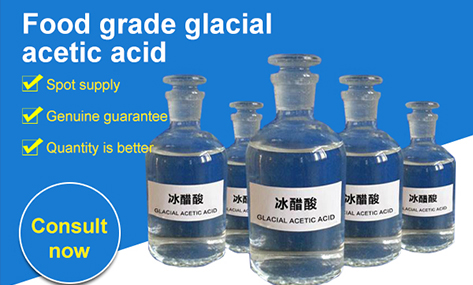
Nov . 08, 2024 03:03 Back to list
Differences Between Glacial Acetic Acid and Regular Acetic Acid Explained
The Difference Between Glacial Acetic Acid and Acetic Acid
Acetic acid is a fundamental organic compound with the chemical formula CH₃COOH. It is a colorless liquid that has a distinctive sour taste and strong odor. Acetic acid is commonly found in vinegar, which typically contains about 4% to 8% acetic acid by volume. However, in the context of chemical usage, we often hear the term glacial acetic acid. While both forms refer to the same basic substance, they possess different physical properties and applications, and understanding these differences is crucial for their effective use in various fields.
Definition and Composition
Acetic acid, in its general form, can refer to any concentration of the acid, including its aqueous solutions that are commonly used in culinary and food preservation contexts. On the other hand, glacial acetic acid refers to the pure form of acetic acid, with a concentration of 99% to 100%. It derives its name from its tendency to solidify into a glass-like solid at temperatures below 16.6°C (62°F). Thus, glacial acetic acid typically appears as a colorless, hygroscopic liquid at room temperature but can become a solid when cooled.
Physical Properties
One of the most significant differences between glacial acetic acid and diluted acetic acid lies in their physical properties. Glacial acetic acid has a higher boiling point (118°C or 244°F) compared to that of ordinary vinegar, which usually boils at about 100°C (212°F). This difference can affect their behavior in various chemical reactions and processes, making glacial acetic acid more suitable for specific industrial applications, where high concentrations and effective solvent properties are required.
Moreover, glacial acetic acid is a stronger acid than its diluted counterpart. When acetic acid is diluted in water, its acidity decreases due to the distribution and interaction of its molecules with water molecules, leading to a reduced concentration of free hydrogen ions. This property makes glacial acetic acid a powerful reagent in organic chemistry, as it can act as both a solvent and a reactant in various chemical synthesis reactions.
Applications
what is difference between glacial acetic acid and acetic acid

Glacial acetic acid is used in numerous industrial applications. It serves as a vital intermediate in the production of various chemicals, such as acetic anhydride, acetate esters, and other derivatives that have applications in textiles, plastics, and food additives. In laboratories, glacial acetic acid is often used as a solvent and a reagent in organic synthesis. Its high purity and strong acidic nature make it ideal for reactions that require precise conditions.
Conversely, diluted acetic acid, commonly found in household vinegar, is primarily used for culinary purposes, food preservation, and cleaning. It is effective in salad dressings, marinades, and pickling solutions. Additionally, its mild acidic nature allows it to be safely used in domestic cleaning products for removing mineral deposits, odors, and stains.
Safety Considerations
It is essential to consider safety when handling both types of acetic acid. Glacial acetic acid is classified as a corrosive substance. It can cause severe burns and irritation upon contact with skin and eyes, and its vapors can lead to respiratory issues if inhaled. Proper protective equipment, such as gloves and goggles, should always be used when working with glacial acetic acid.
In contrast, normal vinegar is generally safe for consumption and poses minimal risks in everyday handling. However, concentrated acetic acid should never be ingested or used without proper knowledge and precautions.
Conclusion
In summary, while glacial acetic acid and acetic acid share the same chemical backbone, their differences in concentration, physical properties, and applications make them suitable for distinct uses. Understanding these differences is crucial for anyone working with these substances, whether for culinary, industrial, or laboratory purposes. Each form plays a vital role in its respective area, contributing significantly to both everyday life and advanced chemical processes.
-
SmartAgri Solutions - Precision Farming&Soil Monitoring
NewsJul.13,2025
-
Industrial Solutions-Example Inc.|Smart Manufacturing&Energy Efficiency
NewsJul.13,2025
-
Food Grade Glacial Acetic Acid-Pure Quality|High-Purity Acetic Acid,Food-Grade Chemical
NewsJul.13,2025
-
Industrial Efficiency Solutions-NextGen Technologies|Advanced Automation&Data-Driven Analytics
NewsJul.12,2025
-
Smart Manufacturing Solutions-Example.com|Enhance Efficiency&Reduce Costs
NewsJul.12,2025
-
Food grade glacial acetic acid
NewsMar.07,2025
